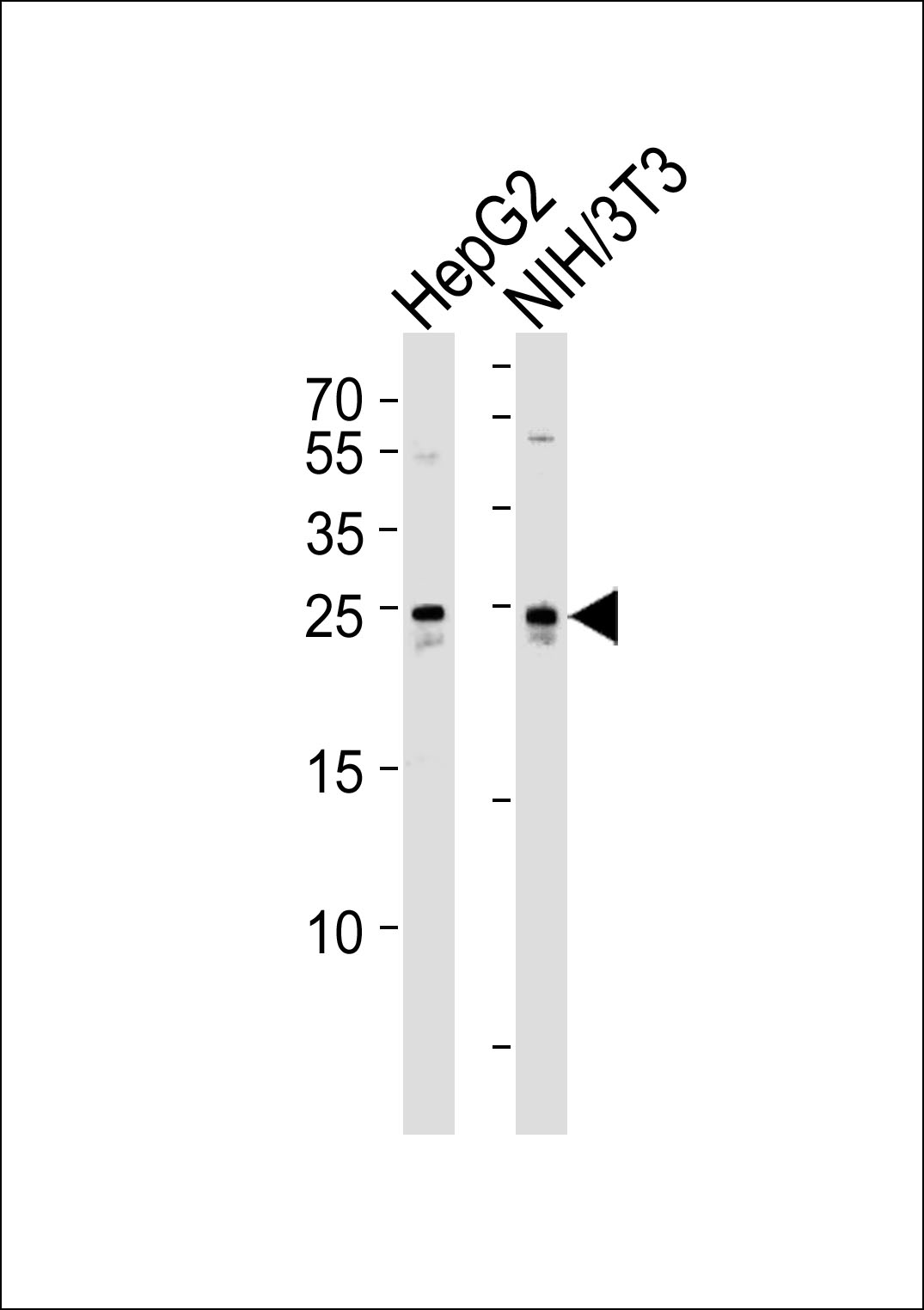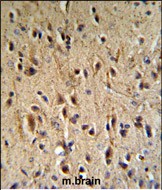PTHLH Antibody (N-term)
Affinity Purified Rabbit Polyclonal Antibody (Pab)
- 产品详情
- 文献引用 : 2
- 实验流程
- 背景知识
Application
| WB, IHC-P, E |
|---|---|
| Primary Accession | P12272 |
| Reactivity | Human, Rat, Mouse |
| Host | Rabbit |
| Clonality | Polyclonal |
| Isotype | Rabbit IgG |
| Calculated MW | 20194 Da |
| Antigen Region | 10-41 aa |
| Gene ID | 5744 |
|---|---|
| Other Names | Parathyroid hormone-related protein, PTH-rP, PTHrP, Parathyroid hormone-like protein, PLP, PTHrP[1-36], PTHrP[38-94], Osteostatin, PTHrP[107-139], PTHLH, PTHRP |
| Target/Specificity | This PTHLH antibody is generated from rabbits immunized with a KLH conjugated synthetic peptide between 10-41 amino acids from the N-terminal region of human PTHLH. |
| Dilution | WB~~1:1000 IHC-P~~1:100~500 E~~Use at an assay dependent concentration. |
| Format | Purified polyclonal antibody supplied in PBS with 0.09% (W/V) sodium azide. This antibody is purified through a protein A column, followed by peptide affinity purification. |
| Storage | Maintain refrigerated at 2-8°C for up to 2 weeks. For long term storage store at -20°C in small aliquots to prevent freeze-thaw cycles. |
| Precautions | PTHLH Antibody (N-term) is for research use only and not for use in diagnostic or therapeutic procedures. |
| Name | PTHLH {ECO:0000303|PubMed:20170896, ECO:0000312|HGNC:HGNC:9607} |
|---|---|
| Function | Neuroendocrine peptide which is a critical regulator of cellular and organ growth, development, migration, differentiation and survival and of epithelial calcium ion transport (PubMed:12538599, PubMed:35932760, PubMed:3616618). Acts by binding to its receptor, PTH1R, activating G protein-coupled receptor signaling (PubMed:19674967, PubMed:35932760). Regulates endochondral bone development and epithelial-mesenchymal interactions during the formation of the mammary glands and teeth (By similarity). Required for skeletal homeostasis (PubMed:12538599). Promotes mammary mesenchyme differentiation and bud outgrowth by modulating mesenchymal cell responsiveness to BMPs (PubMed:12538599). Up-regulates BMPR1A expression in the mammary mesenchyme and this increases the sensitivity of these cells to BMPs and allows them to respond to BMP4 in a paracrine and/or autocrine fashion (By similarity). BMP4 signaling in the mesenchyme, in turn, triggers epithelial outgrowth and augments MSX2 expression, which causes the mammary mesenchyme to inhibit hair follicle formation within the nipple sheath (By similarity). Promotes colon cancer cell migration and invasion in an integrin alpha-6/beta-1- dependent manner through activation of Rac1 (PubMed:20637541). |
| Cellular Location | Secreted. Cytoplasm. Nucleus |
| Tissue Location | Ubiquitous. Also expressed in the mammary gland. |
For Research Use Only. Not For Use In Diagnostic Procedures.

Provided below are standard protocols that you may find useful for product applications.
BACKGROUND
PTHLH is a member of the parathyroid hormone family. This hormone regulates endochondral bone development and epithelial-mesenchymal interactions during the formation of the mammary glands and teeth. This hormone is involved in lactation possibly by regulating the mobilization and transfer of calcium to the milk. The receptor of this hormone, PTHR1, is responsible for most cases of humoral hypercalcemia of malignancy.
REFERENCES
Trynka,G., Zhernakova,A. Gut 58 (8), 1078-1083 (2009) Nakao,A., Kajiya,H. J. Dent. Res. 88 (6), 551-556 (2009) Iwamura,M., Hellman,J. Urology 48 (2), 317-325 (1996) Fenton,A.J., Kemp,B.E. Endocrinology 129 (6), 3424-3426 (1991)
终于等到您。ABCEPTA(百远生物)抗体产品。
点击下方“我要评价 ”按钮提交您的反馈信息,您的反馈和评价是我们最宝贵的财富之一,
我们将在1-3个工作日内处理您的反馈信息。
如有疑问,联系:0512-88856768 tech-china@abcepta.com.






















 癌症的基本特征包括细胞增殖、血管生成、迁移、凋亡逃避机制和细胞永生等。找到癌症发生过程中这些通路的关键标记物和对应的抗体用于检测至关重要。
癌症的基本特征包括细胞增殖、血管生成、迁移、凋亡逃避机制和细胞永生等。找到癌症发生过程中这些通路的关键标记物和对应的抗体用于检测至关重要。 为您推荐一个泛素化位点预测神器——泛素化分析工具,可以为您的蛋白的泛素化位点作出预测和评分。
为您推荐一个泛素化位点预测神器——泛素化分析工具,可以为您的蛋白的泛素化位点作出预测和评分。 细胞自噬受体图形绘图工具为你的蛋白的细胞受体结合位点作出预测和评分,识别结合到自噬通路中的蛋白是非常重要的,便于让我们理解自噬在正常生理、病理过程中的作用,如发育、细胞分化、神经退化性疾病、压力条件下、感染和癌症。
细胞自噬受体图形绘图工具为你的蛋白的细胞受体结合位点作出预测和评分,识别结合到自噬通路中的蛋白是非常重要的,便于让我们理解自噬在正常生理、病理过程中的作用,如发育、细胞分化、神经退化性疾病、压力条件下、感染和癌症。







